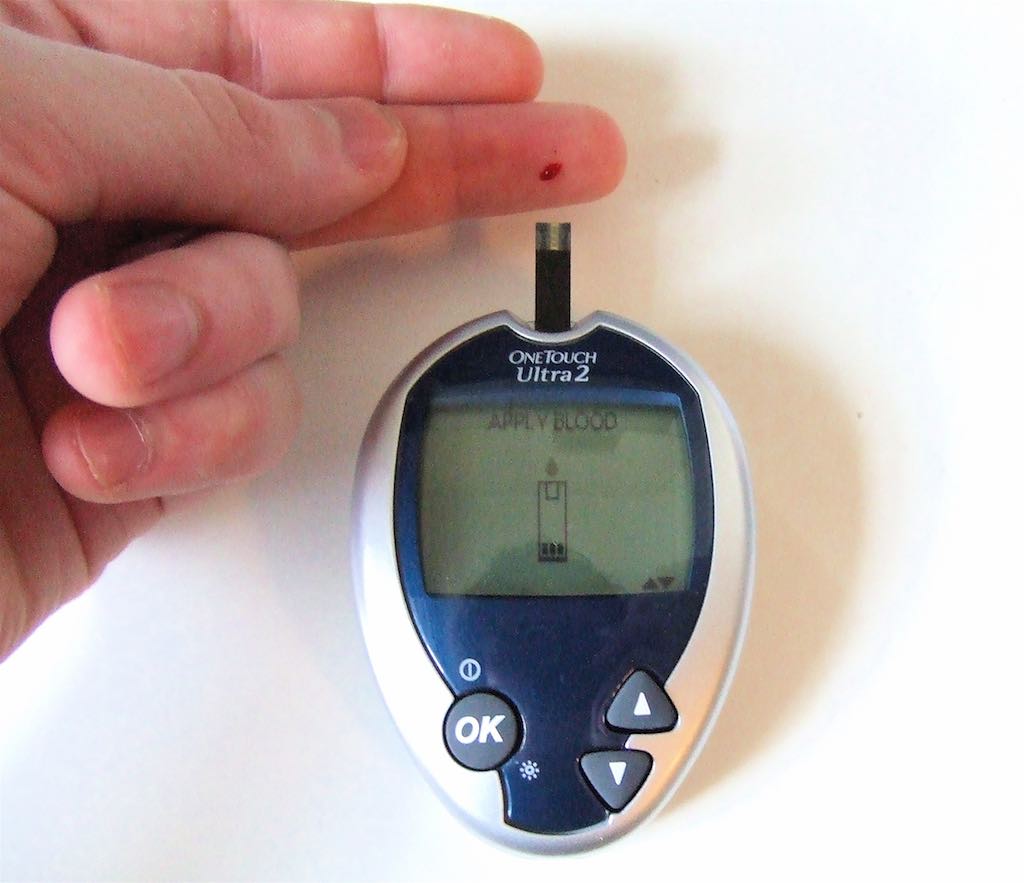Blood glucose (blood sugar) monitoring is the main tool you have to check your diabetes control. This check tells you your blood glucose level at any one time.
Keeping a log of your results is vital. When you bring this record to your health care provider, you have a good picture of your body’s response to your diabetes care plan. To help keep track of your levels, we have an online tool Diabetes 24/7 or a printable blood glucose log. We also have a blood glucose log that’s smaller so you can carry it with you available for purchase.
Who Should Check?
Talk to your doctor about whether you should be checking your blood glucose. People that may benefit from checking blood glucose include those:
- taking insulin
- that are pregnant
- having a hard time controlling blood glucose levels
- having low blood glucose levels
- having low blood glucose levels without the usual warning signs
- have ketones from high blood glucose levels
How Do I Check?
- After washing your hands, insert a test strip into your meter.
- Use your lancing device on the side of your fingertip to get a drop of blood.
- Touch and hold the edge of the test strip to the drop of blood, and wait for the result.
- Your blood glucose level will appear on the meter’s display.
Note: All meters are slightly different, so always refer to your user’s manual for specific instructions.
Other tips for checking:
- With some meters, you can also use your forearm, thigh or fleshy part of your hand.
- There are spring-loaded lancing devices that make sticking yourself less painful.
- If you use your fingertip, stick the side of your fingertip by your fingernail to avoid having sore spots on the frequently used part of your finger.
What Are the Target Ranges?
Blood glucose targets are individualized based on:
- duration of diabetes
- age/life expectancy
- comorbid conditions
- known CVD or advanced microvascular complications
- hypoglycemia unawareness
- individual patient considerations.
The American Diabetes Association suggests the following targets for most nonpregnant adults with diabetes. More or less stringent glycemic goals may be appropriate for each individual.
- A1C: 7%
- A1C may also be reported as eAG: 154 mg/dl
- Before a meal (preprandial plasma glucose): 80–130 mg/dl
- 1-2 hours after beginning of the meal (Postprandial plasma glucose)*: Less than 180 mg/dl
*Postprandial glucose may be targeted if A1C goals are not met despite reaching preprandial glucose goals.
What Do My Results Mean?
When you finish the blood glucose check, write down your results and review them to see how food, activity and stress affect your blood glucose. Take a close look at your blood glucose record to see if your level is too high or too low several days in a row at about the same time. If the same thing keeps happening, it might be time to change your plan. Work with your doctor or diabetes educator to learn what your results mean for you. This takes time. Ask your doctor or nurse if you should report results out of a certain range at once by phone.
Keep in mind that blood glucose results often trigger strong feelings. Blood glucose numbers can leave you upset, confused, frustrated, angry, or down. It’s easy to use the numbers to judge yourself. Remind yourself that your blood glucose level is a way to track how well your diabetes care plan is working. It is not a judgment of you as a person. The results may show you need a change in your diabetes plan.
What About Urine Checks for Glucose?
Urine checks for glucose are not as accurate as blood glucose checks and should only be used when blood testing is impossible. Urine checks for ketones, however, is important when your diabetes is out of control or when you are sick. Everyone with diabetes should know how to check urine for ketones.
For More Information
Use Diabetes 24/7, our free online tool, to track and analyze your blood glucose readings.
Read about the latest advances in blood glucose meters in Diabetes Forecast’s “2015 Consumer Guide”.
Managing Your Diabetes Glucose four-book set, available from ShopDiabetes.org
Enroll in the free Living With Type 2 Diabetes program to get information and support.

